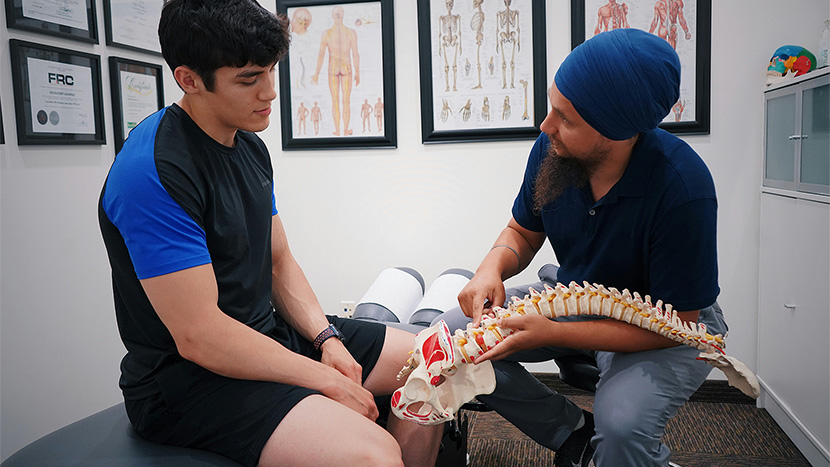Understanding the Composition of Bones and Joints – Plus 3 Ways to Support Their Health
We rarely think about our bones and joints while we’re healthy and mobile. It is usually after we’ve broken something or developed some bone and joint condition that we start thinking about improving our musculoskeletal system, which is a pity, considering most of us reach peak bone mass around age 30 or earlier. After age 30, bone remodeling (more on this below) continues, but, unfortunately, we lose slightly more bone mass than we can gain.
Thankfully, it’s never too late (or too early, for that matter!) to start working on improving your bone and joint health. Even after your forties, fifties, and beyond, you can do a lot to protect your bones and maintain their health.
But to do that, you first need to understand exactly what bones and joints are made of and how they function. Only then can you fully appreciate how much diet, supplements, and physical activity affect our entire musculoskeletal system.
The Anatomy of Bones and Joints
You may think of your bones as these rigid structures, but they’re much more than that: they’re actually living tissues that are constantly changing and remodeling themselves. In fact, bone remodeling, which is a process of bone resorption and formation, lasts your whole life.
Made up of a combination of collagen (a protein that provides flexibility) and calcium phosphate (a mineral that adds strength and hardness), bones could be called contradictory tissues: they can withstand various stresses yet remain flexible.
As for joints, the simplest way to explain what they are is to consider them in relation to your bones: joints are where your bones meet, so they enable movement.
There are several types of joints, including:
- Fibrous Joints: Immovable joints, such as those in the skull.
- Cartilaginous Joints: Slightly movable joints found in the spine.
- Synovial Joints: Freely movable joints like the knees and elbows, which are the most common.
Each type has components like cartilage, which cushions the bones; synovial fluid, which lubricates the joint; and ligaments, which hold the bones together.
Supporting and Improving Bone and Joint Health
Your lifestyle choices – what you eat, what supplements you take (or don’t take), and how you move and exercise – directly impact your bone density and joint health.
Diet
To support your bone density, it’s essential to eat a healthy diet that contains enough calcium and vitamin D (supplements can help, too, but more on that later). Calcium can be found in various dairy products, including milk and cheese, but also in leafy greens like cabbage and broccoli. You can get vitamin D from sunlight and foods like fatty fish, egg yolks, and fortified foods like cereals.
Magnesium, found in nuts and whole grains, also supports bone health, while omega-3 fatty acids, present in fish oil and flaxseeds, help reduce inflammation in joints.
Supplements
To ensure you’re getting enough of all the nutrients needed for bone and joint health, you might want to consider taking quality supplements. Of course, you don’t want to rely on supplements only – most of your nutrients should come from a balanced, wholesome diet – but they can help fill in nutritional gaps you might have in your diet, whether because you cannot eat certain foods or because you can’t digest them properly.
Here are some of the supplements to consider taking for your joints and bones:
- Calcium
- Vitamin D and K2
- Glucosamine and Chondroitin
- Turmeric
- Omega 3s
- Magnesium
Whichever supplements you choose to take, make sure they are of good quality and third-party tested. For example, Performance Lab joint supplements are both third-party tested and made with research-backed ingredients.
Of course, feel free to do your own research here; ultimately, as long as the supplements are made with quality ingredients and are bioavailable, the brand doesn’t matter much.
Exercise
Regular exercise is crucial for maintaining bone and joint health, that much we all know. But which exercises specifically help support bone density?
- Weight-bearing exercises: This includes activities in which you work with your body weight and against gravity. So, walking, running, hiking, playing sports, and even dancing are all recommended.
- Weight lifting: Resistance training exercises help muscles become stronger and bigger, putting stress on the bones, thereby making bones stronger, too.
Finally, it’s also important to avoid doing certain things if you want to protect your bones and joints. Both smoking and alcohol are unhealthy – shocking, we know – but they’re particularly bad for your bone density and blood flow. You should also be mindful of your weight – excess pounds translate to additional stress on your joints, particularly those in your lower body, like hips and knees.


































































































